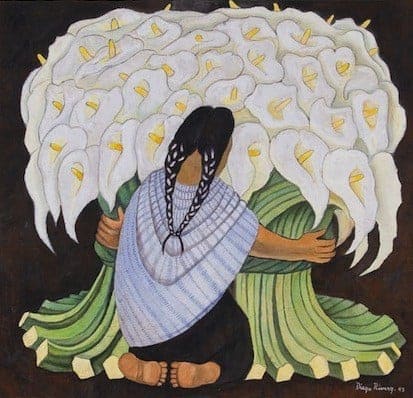Artemundi Global Fund acquires the most relevant work in Diego Rivera’s iconography

Considered the greatest Mexican painter of the twentieth century, Diego Rivera had a profound effect on the international art world. His social commitment to the working classes led him to create a series of magnificent easel paintings that portrait peasants, Indians and factory workers with grand dignity. He had a special veneration for the native Indians, and portrayed with great passion their elegance and beauty, considering them, according to his wife Frida Kahlo “the living flower of the cultural tradition of the Americas.”
His most famous and sought‐after paintings are the representations of indigenous women and men carrying or selling flowers. His “Flower vendors” have been acquired by the most prestigious museums in the United States and Mexico: The Museum of Modern Art, New York (MOMA); The Los Angeles County Museum of Modern Art (LACMA); The Philadelphia Museum of Art; the San Francisco Museum of Art (SFMOMA), among others.
Vendedora de alcatraces (Calla Lily’s Vendor) is a splendid work on paper, done after Rivera’s oil with the same title, now in the collection of Banco Nacional de Mexico. The painter was a master in diverse techniques, among them watercolor and gouache, which he used widely to represent daily life scenes, especially at the local markets. One of his favorite subjects where the Indians selling calla lilies, which thanks to Rivera have become national icons.

